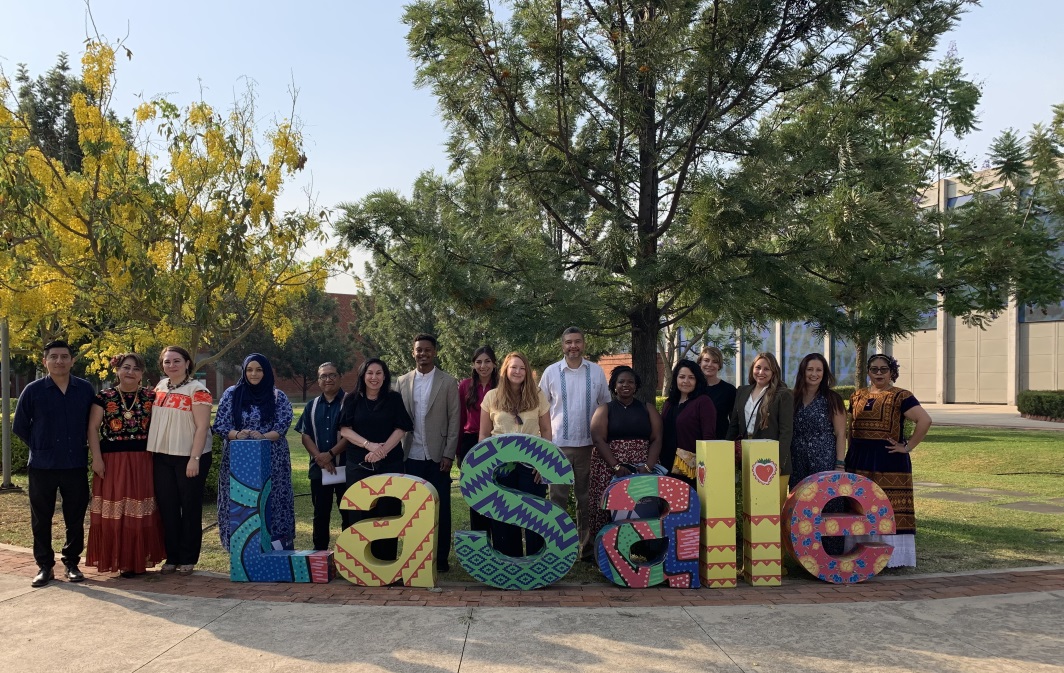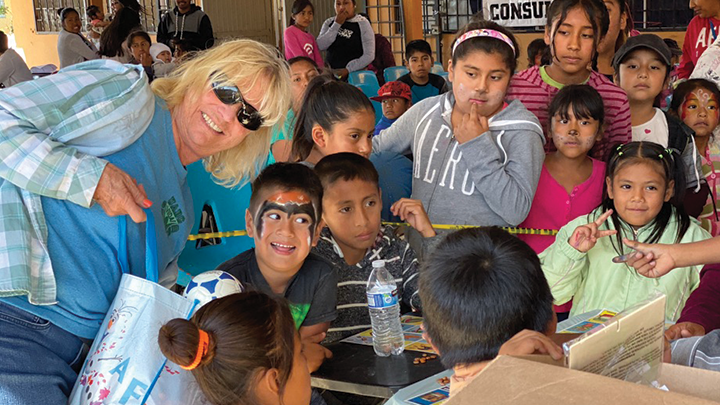San Diego State University Professor Emeritus Stephanie Brodine has been taking public health graduate students to Baja California for years, where they’ve installed stove pipes to ventilate migrant worker cabins, provided nutrition and exercise programs to combat anemia, and offered reproductive health education for teens.
Their latest effort works with partner universities in Baja California and the U.S. to curb Rocky Mountain Spotted Fever in the San Quintin region, south of Ensenada. Students will spend four days this spring providing early intervention training and tick-killing dog collars to help stomp out the disease.
It’s among many SDSU’s transborder engagement efforts, which encourage faculty to develop binational research and teaching partnerships as part of the university’s internationalization objectives.
Partnerships with Universidad Autónoma de Baja California (UABC), El Colegio de la Frontera Norte, Centro de Investigación Científica y de Educación Superior de Ensenada and additional collaborators serve as the backbone for SDSU faculty to embark on crossborder research and education, said Vinod Sasidharan, director of Transborder and Regional Faculty Engagement.
“Our role is to make those connections,” said Sasidharan. “This is a region, not just this country or that country. We have real-life projects where students can learn issues that are contemporary and relevant today.”
Marva Cappello, director of the Joint Doctoral Program in Education offered with Claremont Graduate University, jumped on an opportunity to take doctoral students to Oaxaca in Southern Mexico last spring. That led to a whirlwind five months of creating an embedded study abroad course with Universidad La Salle Oaxaca.
Cappello sent her students’ research interests to collaborator Lorena Broca at the Universidad La Salle to find matches. The combined classes met online over eight weeks to explore topics such as counseling, health care and women in leadership roles in higher education. In May, the students traveled to Oaxaca for nine days, visiting schools, participating in a binational seminar, and learning about the culture.
 Professor Marva Cappello, sixth from left, teamed up with collaborators in Oaxaca to create an embedded study abroad program for joint doctoral students in education.
Professor Marva Cappello, sixth from left, teamed up with collaborators in Oaxaca to create an embedded study abroad program for joint doctoral students in education.
“Even though it was a short experience, it seemed to have a really big impact, so I take that into my teaching knowing that this is a benefit to the students,” said Cappelo, who plans to continue the relationship under a long-term partnership with La Salle.
“It is a significant part of my academic journey now.”
There are hurdles to launching transborder education and research programs, with perhaps the largest centered on funding. Trent Biggs, a hydrology researcher in SDSU’s geography department, works with colleagues in Mexico to probe border watershed issues, including pollution in the Tijuana River Valley. Many of his Mexican colleagues are involved in field research. But Biggs has been frustrated at times trying to pay crossborder collaborators.
“There are institutional challenges with transferring money from the U.S. to Mexico, and some of those problems are restrictions from the funding sources, and some of them are internal to the SDSU system and the Mexican system,” he said.
Brodine’s crossborder work began years ago when Miguel Fraga of UABC invited SDSU public health students to work along the border. University of California San Diego medical students joined the VIIDAI partnership, led by Richard Garfein.
After beginning in migrant camps the students concentrated their efforts in Colonia Lomas de San Ramon, a small farming village, where the participants have done research, offered medical clinics, and built public health-related projects in the community.
Many projects, such as remodeling the kitchen at the local school and the addition of a computer lab, have been funded largely by San Diego’s Old Mission Rotary and Rotary International. Additional support from Escondido-based Aquacycl helped develop and install water purification in the colonia.
The latest project is focused on Rocky Mountain Spotted Fever, a tick-borne ailment that’s easily treated but, if untreated, can be fatal, particularly in children. A pilot effort this fall to collar dogs showed good results, and the team is anticipating Rotary funding, which will provide additional tick-repellent dog collars and early intervention training across the region.
For Brodine, one of the most rewarding aspects of these cross-border programs is the strong bonds that they create with students, collaborators, and the community.
“You have a different relationship with your students because you are in the field,” she said. “It is very real and very rich. Given the world we are living in with different crises, we have an obligation to prepare students, whether they be clinical or in public health, to be able to respond and fit into an international team that is responding.”





